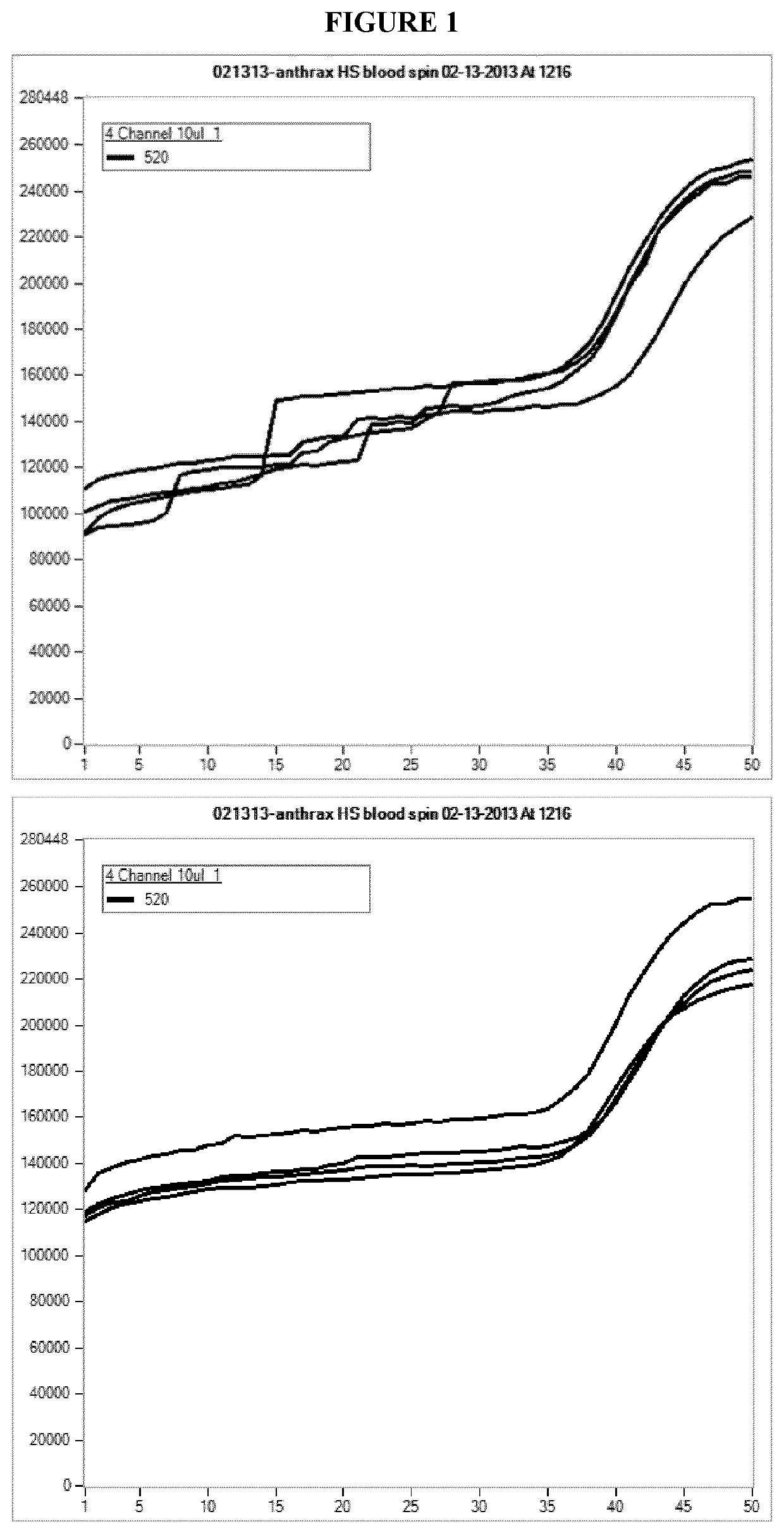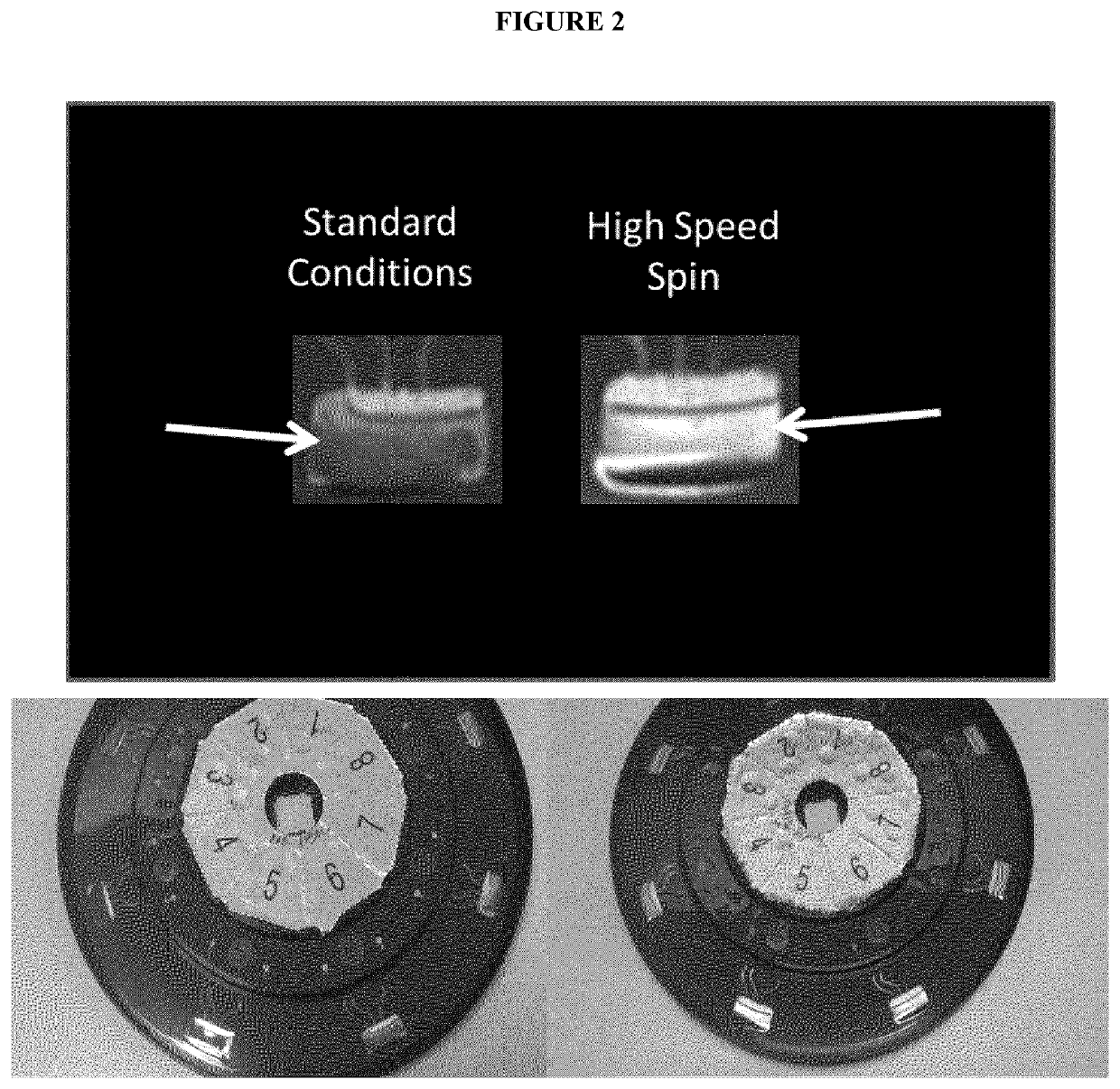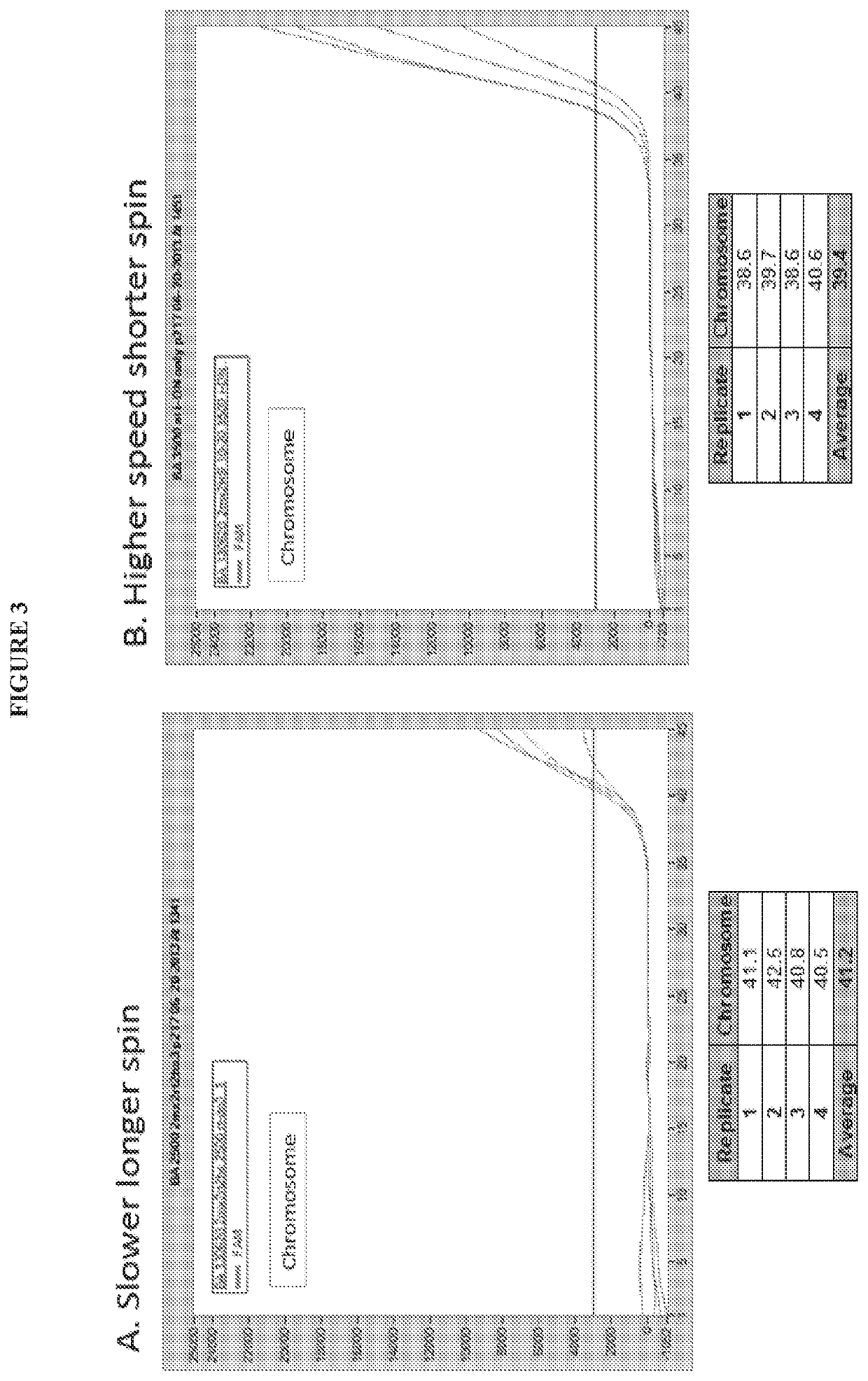Amplification and detection of nucleic acids in a biological sample
a technology of nucleic acids and biological samples, applied in the direction of dna preparation, biochemistry apparatus and processes, microorganism lysis, etc., can solve the problems of high contamination risk, time-consuming and labor-intensive extraction of nucleic acids of organisms from biological samples, and interference with pcr amplification
- Summary
- Abstract
- Description
- Claims
- Application Information
AI Technical Summary
Benefits of technology
Problems solved by technology
Method used
Image
Examples
example 1
Off-Board Spinning Experiments of Whole Blood
[0079]Experiments involving off-board centrifugation of whole blood samples were performed. The samples were spun at 900×g for 10 minutes at 23° C. The results show that the centrifugation of the blood samples with a pre-spin reduces the variation in background fluorescence and undesirable amplification curve, whereas blood samples without a pre-spin do not have a reduced variation in the background of fluorescence (FIG. 1).
example 2
Effect of Centrifugal Microfluidic Disc High Speed Spin on Detection of Viral RNA or Bacterial DNA in Whole Blood
[0080]Increasing the rotational velocity or the spin speed of the centrifugal microfluidic disc on the 3M Integrated Cycler system produced unexpected results. A specially designed software was used to control the rotational velocity or spin speed in a range from about 140×g to about 1500×g. Further optimization of the spin speed parameters on a per assay basis was done as illustrated below. This method has been successfully applied to amplify a nucleic acid directly from whole blood in an assay to detect Bacillus anthracis, a Viral Hemorrhagic Fever panel, and a Dengue fever serotyping assay as shown below.
[0081]A. Dengue Virus Spiked Blood
[0082]Inactivated Dengue virus was diluted in whole blood or PBS buffer. The identical samples were run with an assay definition that spun the samples at about 1500 rpm (about 140×g) during the whole assay, which is the standard method...
example 3
Effect of Universal Disc High Speed Spin on Amplification and Melt Analysis of Human DNA in Whole Blood
[0089]Molecular tests for mutations in genes responsible for coagulation related to thrombosis such as Factor V, Factor II and MTHFR genes were performed to determine the effect of high speed spin on detection and amplification of human DNA in whole blood.
[0090]Two identical Universal Discs were prepared with reaction mixes including primers and Hybeacon™ probes for single nucleotide polymorphisms in the methylenetetrahydrofolate reductase (MTHFR) gene. The reaction consisted of 8 μL of reaction mix plus 2 μL of whole blood or buffer as the sample or 9 μL of reaction mix plus 1 μL of whole blood or buffer. Two discs were run using separate parameters: one with the standard PCR followed by melt analysis protocol, and the other with the standard protocol but a high speed spin step added between the PCR cycles and the melt analysis step. The results, shown in FIG. 5, demonstrate that ...
PUM
| Property | Measurement | Unit |
|---|---|---|
| temperatures | aaaaa | aaaaa |
| temperatures | aaaaa | aaaaa |
| temperatures | aaaaa | aaaaa |
Abstract
Description
Claims
Application Information
 Login to View More
Login to View More - R&D
- Intellectual Property
- Life Sciences
- Materials
- Tech Scout
- Unparalleled Data Quality
- Higher Quality Content
- 60% Fewer Hallucinations
Browse by: Latest US Patents, China's latest patents, Technical Efficacy Thesaurus, Application Domain, Technology Topic, Popular Technical Reports.
© 2025 PatSnap. All rights reserved.Legal|Privacy policy|Modern Slavery Act Transparency Statement|Sitemap|About US| Contact US: help@patsnap.com



